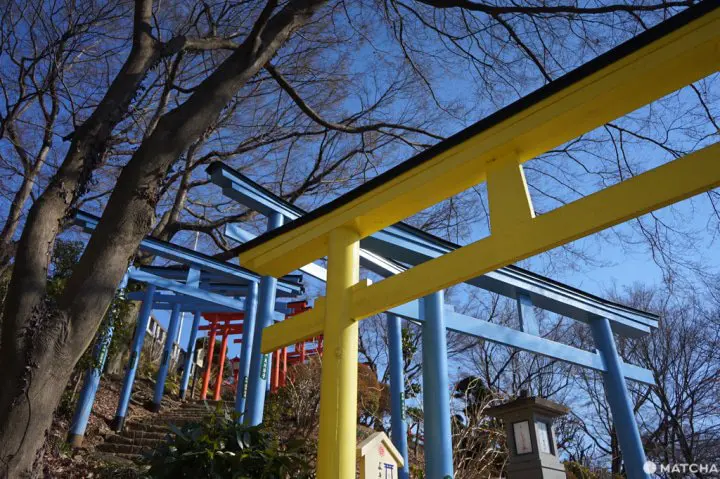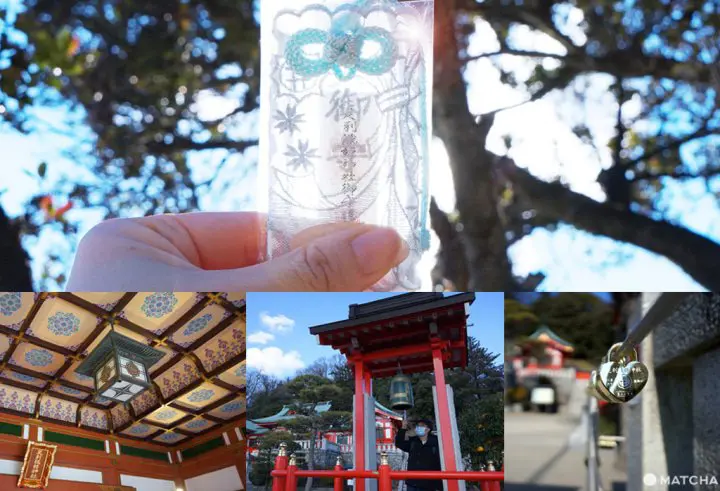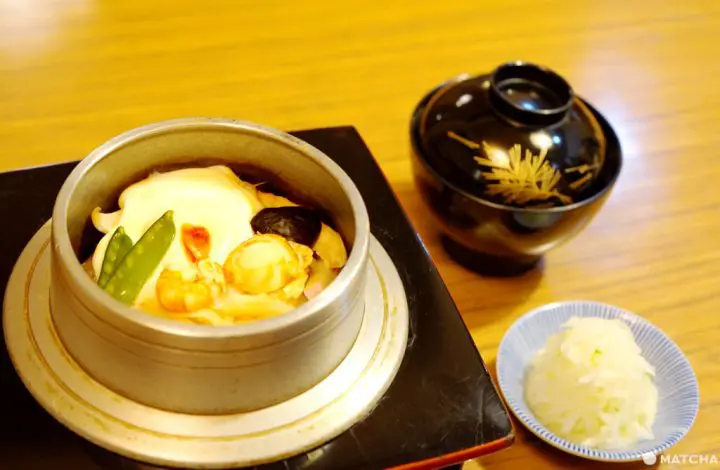Ashikaga Travel Tips: Explore the City of Wisterias and Other Amazing Sights

The TV network CNN selected Ashikaga Flower Park, known for its beautiful wisterias, as a top travel destination. However, Ashikaga has many other attractions, including Orihime Shrine and Japan's oldest school. This article will help you start brainstorming your own adventure in Ashikaga!
A Brisk Getaway on a Rental Bike!

Ashikaga City is located in the southwestern region of Tochigi Prefecture. It's known for its connections to the Ashikaga shogun family that governed in Japan during the Muromachi Period (1336-1573).
You can discover many highlights within the city, including Ashikaga Gakko (Japan's oldest school) and retro cityscapes with cobblestone streets. For this reason, it's often nicknamed "Eastern Japan's Little Kyoto."
The city is filled with numerous sightseeing spots. While many of these locations are accessible on foot, it's also fun to go sightseeing on a rental bicycle.
Bicycle rentals are available at two places through the local Ashikaga City Tourism Association. The first place is the Ashikaga Tourism Information Center, located near Tobu Ashikagashi Station. The other is Taihei Kikan (Tourist Information and Gift Shop), near JR Ashikaga Station and various sightseeing spots in the city.
It's even possible to pick up your rental bicycle at the Ashikaga Tourism Information Center and return it at the Taihei Kikan.
Regular bicycles and electric bicycles are available.
Three-hour rentals: 400 yen (regular), 600 yen (electric); One-day rentals: 800 yen (regular), 1,200 yen (electric)

Taihei Kikan is easily accessible to various sightseeing spots in Ashikaga City! The facility has an adjoining souvenir shop and cafe and you'll be able to spend some relaxing time here.
Upon opening the door and stepping inside, you'll immediately see a display highlighting the full armor and helmet worn by shogun Ashikaga Takauji (1305-1358). You have stepped into the world of "Taiheiki," a historical drama on NHK starring Hiroyuki Sanada.
When the drama finished filming, the armor was displayed at Taihei Kikan. This was to recognize Ashikaga City as being the roots of the Ashikaga clan, which established the Muromachi Shogunate.
Ashikaga Orihime Shrine: For Good Luck in Relationships

Ashikaga Orihime Shrine is known for bringing good fortune with relationships, matchmaking, and business prosperity.
It was once destroyed in a fire, but residents helped rebuild the shrine. The front showcases the luxurious vermilion color of the shrine's main building. It's been said that it copies the architectural style of Byodoin Temple's Phoenix Hall.
In addition to being a Modern Cultural Heritage Site, the sacred building has become known as the "Dragon Palace On Land."
Don't miss the breathtaking illumination at night! It even made the Nihon Keizai Shimbun newspaper's list of shrines with beautiful night illuminations—sharing honors with Itsukushima Shrine, Sensoji Temple, and Kofukuji Temple.

The two main deities enshrined at Ashikaga Orihime Shrine are Ame no Mihoko no Mikoto and Ame no Yachi Chichihime no Mikoto (Vega, or the Weaver). They are said to have presented textiles to the Shinto sun goddess Amaterasu Omikami.
These gods were invited from Ise Jingu Shrine and collaborated to weave various textiles. Since then, the shrine has become known for bringing good luck in relationships.
There are two separate roads leading to the shrine. Otokozaka, the steeper of the two uphill paths, has 229 steps. Nearby Onnazaka, the easier of the two paths, features torii gates on its steps in seven different colors.
Each torii color represents good luck in various aspects of people's lives. These are human relationships (red), health (yellow), wisdom (green), life (blue), studies (bright green), business and career (vermilion), and business management (purple).
On a clear and sunny day, you can see as far as Mt. Fuji's summit from here.

Mention Ashikaga, and some will probably think of Ashikaga Flower Park, which is famous for its purple wisteria flowers. In one corner of Ashikaga Orihime Shrine, you can see a wisteria trellis with beautiful purple flowers courtesy of Ashikaga Flower Park.

Next to the shrine is Orihime Park. From the Kagamiiwa Observatory in the park's north end, you can marvel at an amazing view of the Kanto Plain. The park is also a famous foliage spot in autumn.

Now, let's introduce some of the highlights of this shrine, which is known as a mecca for lovers.
In addition to the seven-colored torii gates and stunning seasonal scenery, there's also a Bell of Love (above photo, bottom middle) and a place for hanging love lockets (photo, bottom right).
Since the shrine is dedicated to the deity of weaving, colorful lace is used in the ceiling tiles. Lace also appears in the good luck charms (see photo above). Be sure to take a closer look!
While it is a popular date spot, why not plan an outing with friends here?

Next, our writer will recommend a unique way to enjoy Ashikaga Orihime Shrine.
Try looking for heart-shaped motifs throughout the shrine known as "inoshishi no me" (eyes of a wild boar). This motif came from the belief that this strong animal would prevent natural disasters and bring happiness.
You can find a motif on the shrine's offering box (saisenbako) and one in the main building. It'll be fun if you treat this activity as a treasure hunt.
The shrine staff secretly told our writer that there's one more heart motif hidden in a special place. This is an additional thing to look forward to upon arriving here.
Gingama: An Owner Creating Added Value for Customers

Gomoku Kamameshi 1,600 yen after tax
Founded in 1926, Gingama has been serving kamameshi (rice cooked with meat and vegetables in a small pot) ever since.
The rice is washed and cooked in chicken broth after customers place their order. This dedicated way of cooking has not changed for close to a century, allowing customers to enjoy the fragrant aroma of this special dish.

Nearby is a historic movie theater that's often used as a location for movies and film productions. As a result, many famous actors and actresses also frequent the restaurant (see autographed pictures above).

Chicken sauce Tonkatsu 900 yen after tax
In addition to kamameshi, there are many dishes to choose from.
We were told that the Sauce Katsudon is famous among Ashikaga locals and the Chicken Katsudon is a hit. The sauce's sweet fragrance paired with the tender meat and crunchy cabbage match perfectly!

A young fourth-generation owner recently became the shop's new successor. He cast aside the restaurant's old-style image to breathe new life into this long-established shop.
He's responsible for the innovative menu, including entrees such as Doria Kamameshi. This was formerly a seasonal dish, but it has become a regular menu item due to its popularity.
Machinaka Yugakukan: See the Dynamic Beauty of Ashikaga Meisen Silk!

At one time, Ashikaga City was one of the two best textile towns in all of Japan.
Ashikaga Meisen Silk, a fashionable yet highly practical fabric, was popular from the Taisho Period (1912-1926) to the Showa Period (1926-1989).

Double cocoons and spoiled cocoons, which are difficult silk threads to make, are used in the Ashikaga Meisen Silk production.
First, warp threads are laid out and held with temporary weft (filling) threads in preparation for the printing process. Then floral designs and other patterns are dyed (printed) or stenciled onto the threads.
Finally, the sparsely woven weft threads are untied before starting a technique known as hogushiori. Threads are permanently woven into fabric, but only after they have been dyed.

Ashikaga Meisen's main feature is the combination of various floral patterns and designs. While retaining its old charm, the fabric is modern and fashionable.
These innovative designs came to symbolize an independent social status for women at the time.

Picture courtesy of Ashikaga City
Visit Machinaka Yugakukan for Ashikaga Meisen Silk kimono rentals in Ashikaga City.
There are many rental plans available. These include an overnight kimono rental plan, samurai outfit rentals, and much more! Since the rentals are popular among tourists, we recommend making a reservation beforehand.
The kimono plan includes the kimono set, footwear, tabi (Japanese socks with split toe), and an accessory bag. If you need your makeup and hair done, please mention this when making your reservation.
Reservations by phone: 0284-41-8201 E-mail: yugakukan.kimono@gmail.com
Ashikaga Gakko: A School Synonymous with Japanese Education
Ashikaga Gakko is Japan's oldest remaining school. At one time, it was the only place allowed to use the two kanji characters for "gakko" or "school" in Japanese.
There are several stories concerning the founding of the school. However, historical documents show that during the Muromachi Period, a man named Uesugi Norizane donated books and publications that are now national treasures to the school.
Later in 1549, Francisco Xavier proclaimed to the world, "This was the largest and most famous university in Bando (ancient name for the Kanto Region, or eastern Japan)." Presently, Ashikaga Gakko has been designated a National Historic Site.


At Ashikaga Gakko, the curriculum was centered around Confucianism. Students learned from Chinese classical texts, including "The Book of Changes" (I Ching).
In ancient times, students who couldn't read a kanji character or understand the meaning of a word would write it on a slip of paper and tie it to the branch of a pine tree. The following day, the paper would have furigana written on top, showing how to read the character, or additional comments. Thus, the pine tree (matsu) came to be called the "kanafuri matsu" (the pine tree with furigana).
You can sense the students' enthusiastic desire to learn from the tree's hanging branch.

The fully restored main hall (hojo) was where students carried out their daily lives (see photo above). In recent years, this building has served as a film location for movies including "Gintama."
Ashikaga Itinerary: Top Attractions and Day Trips
Hachikura: A Heart-Warming Coffee Shop


Cheesecake 440 yen and coffee 530 yen (tax included)
Hachikura is a cafe inside a renovated storehouse not far from Ashikaga Gakko.
From the entrance, you'll see tasty-looking cakes that are baked with love by the female owner. She can suggest dessert combinations that pair deliciously with a cup of coffee brewed with the utmost care.
The shop also sells a range of miscellaneous goods that have been tried and tested by this husband and wife team.

A seasonal dessert 550 yen (tax included)
If you take a look around Hachikura's premises, you'll get a sense of this couple's daily lifestyle.
All desserts use fruit sourced from Tochigi. On this day, the seasonal dessert was Strawberry Bisque.
Tochiotome strawberries from Shinoda Strawberry Farm in Ashikaga are used in this tasty treat. The sweet, tart flavor of the juicy Tochiotome strawberries combined with fresh cream and custard sauce is exquisite!

Pudding 380 yen (tax included)
There's also a regular dessert menu featuring mouth-watering items, including baked cheesecake and sumptuous puddings.
Whichever dessert you choose, the fresh flavor of the ingredients will fill your mouth with satisfaction. Combined with a freshly brewed cup of coffee, the delicious pairing will treat you to a new taste sensation.

Hachikura recently moved to this present location from its original site, just a short distance away. For this reason, there's been an increase in the number of regular customers and newcomers.
On one of the shop's pillars, the owner measures and records the height of visiting children (right-hand side of the photo). At this lovely cafe, young customers and staff develop and grow together.
Ashikaga Flower Park: There's Much More Than Wisteria Flowers!

Picture courtesy of Tochigi Prefecture
Ashikaga Flower Park boasts wisteria trees that are over one hundred years old. In recent years, this place has become a world-famous sightseeing spot.
In spring, the park grounds, spanning around 94,000 square meters, are home to more than 350 wisteria trees in full bloom. People come from far and wide to enjoy this beautiful sight.
In addition to the purple wisteria, there are also white-colored wisterias competing for the attention of visitors.

Inside the park, visitors can also enjoy a variety of seasonal flowers.
There are peony flowers and plum blossoms in the winter, while the cherry blossoms bloom in spring. In the summer, you can enjoy roses and hydrangeas.
From late autumn until winter, the park is illuminated at night. This beautiful sight was also selected as a Japan Night View Heritage.
In 2018, Ashikaga Flower Park Station was built on the west side of the park, making it even more accessible.
10 Fun Activities and Popular Tourist Attractions in Tochigi Prefecture
Ashikaga: Easy to Access from Tokyo!
There are two methods to access Ashikaga from Tokyo. The first is taking the Tobu Isesaki Line's Limited Express RYOMO from Asakusa Station to Ashikagashi Station.
The second is taking the JR Tohoku Shinkansen or Utsunomiya Line at Ueno Station. Get off at Oyama Station and transfer to the Ryomo Line until JR Ashikaga Station. The one-way travel time is about one hour for both routes. (*Please note that Tobu Railway's Ashikagashi Station and JR Ashikaga Station are different stations and located separately.)
Near the stations, you'll find scenic spots that rival those of national treasures. There are also plenty of excellent restaurants loved by locals for many years.
In Ashikaga, eastern Japan's Little Kyoto, there are many little-known spots that have yet to be introduced! So, do spend a few days here and start planning your own personal adventure!
Main image courtesy of Tochigi Prefecture
Sponsored by Tochigi Prefecture
Our sincere thanks to the shops, facilities, and shrines for their cooperation in writing this article.
Written by Lin
MATCHA's promotional account for corporate and local government advertising. We aim to provide useful information to our readers in an enjoyable manner.






























![[2026] Top 5 Strawberry Picking Spots in Tokushima, Naruto| Farms and Access Guide for January to May](https://resources.matcha-jp.com/resize/720x2000/2025/03/06-227165.webp)



